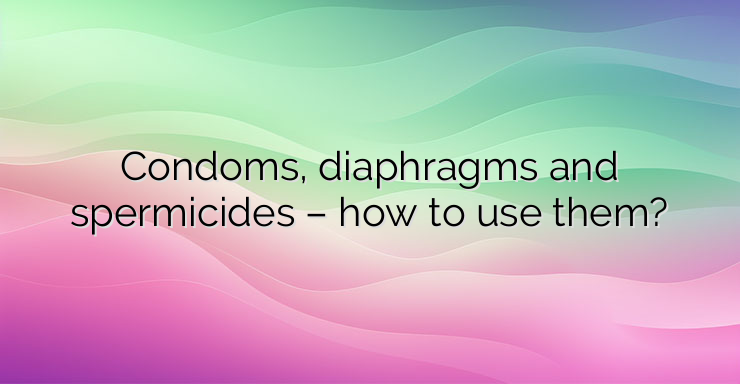Barrier Methods of Preventing Pregnancy: A Comprehensive Guide
Understanding and Choosing the Right Contraceptive Method
When it comes to preventing pregnancy and protecting against sexually transmitted diseases (STDs), barrier methods offer a practical and effective solution. These mechanical means create a barrier that prevents sperm from reaching the uterus, providing reliable protection with minimal side effects. Let’s explore the most common barrier methods available today.
1. Condoms: The Trusted Choice
Condoms remain the most popular contraceptive method for their effectiveness and accessibility. While historically made from materials like linen and animal intestines, modern condoms are typically made from latex or polyurethane. They come in various designs, colors, and even flavors, catering to diverse preferences.
Some condoms feature ribbing or other textures for enhanced pleasure, while most are coated with spermicides to boost contraceptive effectiveness. However, it’s essential to note that some individuals may experience allergies, especially with latex condoms, resulting in itching, redness, or skin rash.
When using condoms, always check the expiration date, avoid opening the package with scissors or teeth, and ensure proper placement to prevent breakage during intercourse. Remember to squeeze the reservoir tip to expel air and roll the condom onto an erect penis, covering it completely. After intercourse, remove the condom carefully to prevent spillage.
2. Diaphragm: Customized Protection
The diaphragm, a polyurethane contraceptive, offers a customized fit for individual users. It is inserted deep into the vagina and covers the cervix, effectively blocking sperm entry. Choosing the right size is crucial to avoid discomfort, as oversized diaphragms may cause pelvic discomfort.
For optimal effectiveness, the diaphragm should be used consistently, removed daily for cleaning, and coated with spermicidal gel before reinsertion. After intercourse, it should remain in place for 6 to 8 hours to prevent pregnancy. While it provides protection against STDs, frequent use may increase the risk of bladder infections.
3. Cervical Caps: Time-Tested Protection
Cervical caps, made of rubber or plastic, offer another long-standing method of preventing pregnancy. These caps are placed in the vagina and secured against the cervix, creating a vacuum seal. Like diaphragms, they can be used with spermicides for added effectiveness.
Variations in shape and size exist, catering to different anatomies and preferences. However, they require careful placement and removal to ensure proper protection. While effective against pregnancy, they may not be suitable for women with a relaxed pelvic floor.
4. Vaginal Sponges: Convenient and Effective
Vaginal sponges, typically made of polyurethane and containing spermicidal ingredients, offer convenient protection against pregnancy. They are inserted deep into the vagina, covering the cervix, and can remain in place for up to 30 hours.
After intercourse, the sponge should be left in for at least 6 hours to maximize effectiveness. While easy to use, frequent use may lead to vaginal dryness and increased risk of infections.
5. Spermicides: On-the-Go Protection
Spermicides come in various forms, including creams, gels, foams, or vaginal tablets, offering quick and accessible protection against pregnancy. They work by immobilizing spermatozoa, preventing them from reaching the uterus.
Insertion should occur at least 15 minutes before intercourse, and re-application may be necessary if sexual contact is delayed beyond one hour. However, frequent use may lead to allergies and vaginal dryness, making them unsuitable for daily use.
Choosing the Right Method for You
When it comes to contraception, there is no one-size-fits-all solution. Each barrier method offers unique advantages and considerations. It’s essential to consult with a healthcare provider to determine the most suitable option based on individual needs, preferences, and health factors.
By understanding the available options and their characteristics, individuals can make informed choices to protect against unplanned pregnancy and STDs while maintaining sexual health and well-being.


Leave a Reply